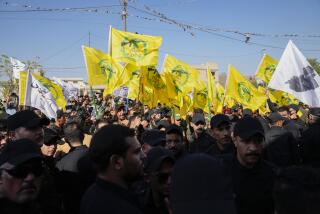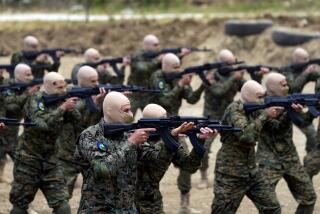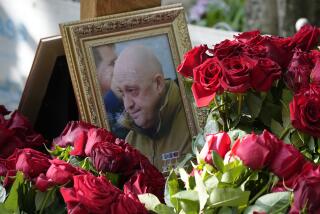Pan Am Probe Focuses on Iran Faction : Sources Cite Evidence Tying Lebanon-Based Terrorists to Bomb
- Share via
WASHINGTON — An investigation of the midair bombing of Pan American Flight 103 is focusing on a Lebanese-based Iranian terrorist faction that had been plotting retaliation for the American downing of an Iranian airliner last year, according to U.S. and diplomatic officials.
According to these sources, the investigation has produced evidence indicating that the terrorists--a combination of Lebanese and Iranian Shiite Muslim extremists--used agents from Paris to carry out the Dec. 21 bombing, which killed all 259 aboard the New York-bound Pan Am Boeing 747 and 11 people on the ground in Scotland.
The group--part of the Hezbollah fundamentalist movement in Lebanon--has been a leading suspect since last month’s crash. U.S. intelligence reported last year that the faction ordered its foreign agents to plan an attack on “U.S. or western interests” four days after the missile-cruiser Vincennes shot down Iran Air Flight 655 over the Persian Gulf on July 3. In that incident, all 290 aboard were killed.
The investigation now points toward a small but formidable band of religious zealots known variously as the Islamic Jihad, the Islamic Amal and the Iranian Revolutionary Guards. The group, headquartered in Lebanon’s Bekaa Valley, is believed by U.S. intelligence officials to control the fate of many of the nine U.S. hostages in captivity.
The faction also remains the primary suspect in the 1983 Beirut bombings that destroyed the U.S. Embassy, killing 63 people including 17 Americans, and the Marine barracks, killing 241 U.S. service personnel.
The sources, who spoke on condition of anonymity, refused to discuss the precise nature of the evidence and a spokesman for the State Department’s counterterrorism unit said the Pan Am investigation has not gone far enough “to point fingers right now.”
But according to the sources, the new evidence has tended to reduce suspicions that a dissident Palestinian faction staged the attack to disrupt the U.S. dialogue with PLO leader Yasser Arafat. The Palestine Liberation Organization leader had taken a more moderate stance toward Israel--a key step in achieving a Mideast peace agreement--shortly before the Pan Am incident.
Officials at the State Department and the Defense Department had differing estimates on the quality of the new evidence, ranging from “hard” to “spotty.”
But these officials agreed that it pointed toward the Iranian faction’s agents based in Paris, where a so-called “sleeping network” of terrorists was used in the past to bomb both French and American targets.
After a Vincennes missile destroyed the Iranian plane in July, Tehran publicly opposed retaliation by terrorists.
But on the same day, U.S. intelligence reported that Iranian Revolutionary Guards in Lebanon had ordered foreign-based agents to attack U.S. or Western targets. One report indicated the attacks could come in Italy or West Germany.
The Pan Am flight originated in Frankfurt, carrying passengers in a Boeing 727 to London, then switched planes to the ill-fated 747.
The investigation also has determined that a plastic explosive was used. Said one U.S. intelligence official: “Constructing that kind of bomb is not difficult. The real skill is getting it aboard the plane.”
More to Read
Sign up for Essential California
The most important California stories and recommendations in your inbox every morning.
You may occasionally receive promotional content from the Los Angeles Times.










